People walk into our showroom often, and are a little overwhelmed by all the choices for strength training. And so one of our jobs is to dissect what the client is trying to get out of their workout to help them make the right choice.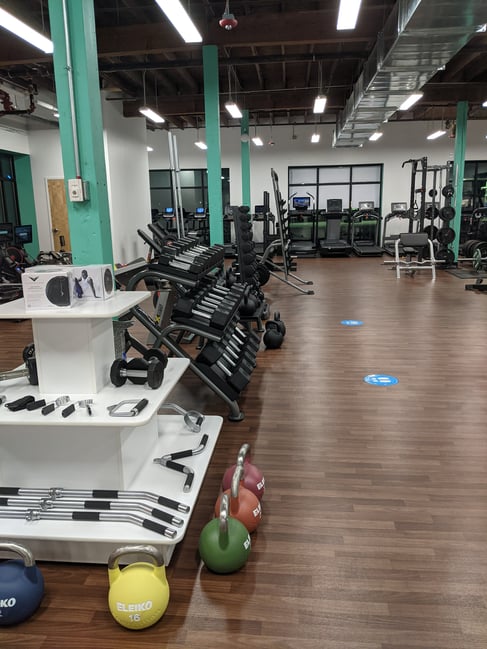

And there's a certain level of exchanging old knowledge for new that goes on as well. Deprogramming, if you will. ConnectFit exists to be your partner in learning about the best workout machines and connecting to a more healthy lifestyle.
In an earlier blog we went over the differences between the main types of strength equipment, free weight systems, multi-gyms, and functional trainers. Today, we're going to delve into the different generations of functional trainers, or cable gyms. They are the newest category of the three, and often the least understood.
First of all, it's important to understand what functional training is. Or what people say it is, at least. Back in the '70s and '80s, people were lifting rocks and logs for workouts. No, that's not the truth, but sometimes it feels that way. There was, however, a very popular move towards single-station strength machines that isolated one muscle group at a time. This was a very safe and 'easy to understand' system for people to use, a machine did a specific muscle or muscle group, and it put people into the proper form. Very safe, and very easy to understand, and very easy to make progressions.
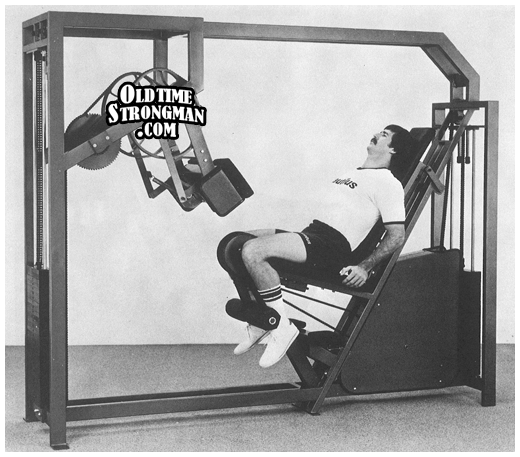

However, it was rightly noticed that rarely in any type of real-world application would a person be put in the perfect position to utilize one muscle. Real-world applications normally involve multiple muscle chains, as well as utilizing the joints and the muscles around the joints as much as the bigger muscles that the single station machines were so good at targeting. So the idea of functional training was to exercise muscles in more functional patterns that would utilize the joints as much as the muscles and to prepare the body to stabilize itself properly. It also involves a lot more usage of core muscles to stabilize the body.
That is a very rough idea of functional training, and it also describes the reason that people moved away from the single station machines and multi-gyms to a large degree, even though there were serious advantages to many of them.
What evolved, to create the proper movement patterns with resistance, were the cable machines known as functional trainers. A cable machine has a weight stack, or multiple weight stacks, with pully outlets that allow you to determine an origin of resistance where the cable comes out, but pull the handle or bar in the direction and angle you want to that fits your body and the exercise you're trying to do.
Definitely more functional and more flexible, they require a certain amount more understanding of what you're trying to get out of each workout.
The cable machines, these functional trainers, take up a lot less space than a traditional multi-gym or platoon of single station machines, and are very flexible and fit different size people very well. But you do need to understand how to use them.
The very first generations of these were the old double cable machines, 11 ft cable crossovers that originally had a high pully and a low pulley, and a little later on would have a cable column that you could slide up and down to determine where the resistance was coming from, although still seven to 11 ft apart. Basically, a pair of single cable machines connected on the top by a bar.
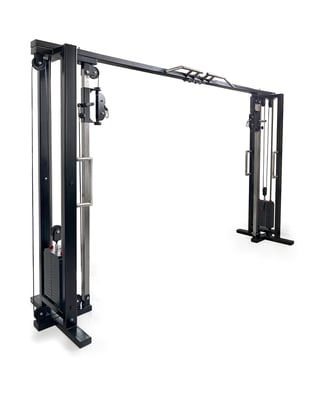
The very first true functional trainers were units that brought that big cable column machine close together. This is also called a 'Simple Functional Trainer', with a pair of cable columns about 3-4 feet apart, that can move the pulley's vertically, but not horizontally.
Nearly all companies make a few versions of these, with varieties on the weight stack and on the height of the machine, as well as the structural durability.
I think it was with the first Freemotion machines that calling these cable machines functional trainers really came into normal usage. The first of these was a single weight stack with two large arms coming out of the machine that you could adjust up and down at an angle out from the frame.
Nearly all companies make a few versions of these, with varieties on the weight stack and on the height of the machine, as well as the structural durability.
I think it was with the first Freemotion machines that calling these cable machines functional trainers really came into normal usage. The first of these was a single weight stack with two large arms coming out of the machine that you could adjust up and down at an angle out from the frame.
I will also stop for a second and mention that much of the secondary muscular effects of these functional trainers, as opposed to the older multi-channel or single station idea was utilizing muscles to stabilize the body while you're trying to exercise with the cables. Regularly, you'd see somebody doing a chest press while leaning forward to use their body weight and different muscles to stabilize the body to perform a chest press. But more muscles were actually working and it was a more real-life usage.
The second generation of these machines added a second weight stack, so that you could do inconsistent loading, bilateral exercises, and even have two people working out at once. But the biggest advantage is that on those bilateral exercises, each arm or leg has its own weight stack, so that the strong side cannot help the week side, which is what happens with a single stack.
The third generation of these machines added a gigantic improvement, they were built still on that design with the arms sticking out of the central column but you could now adjust the arms in and out as well as up and down, laterally as well as vertically. This was what we call the first "complex functional trainer", and the ability to move the resistance laterally as well as vertically relegated the earlier machines with just vertical adjustment into the category of a "simple functional trainer". I can't stress enough how many exercises and advantages this adjustment adds. 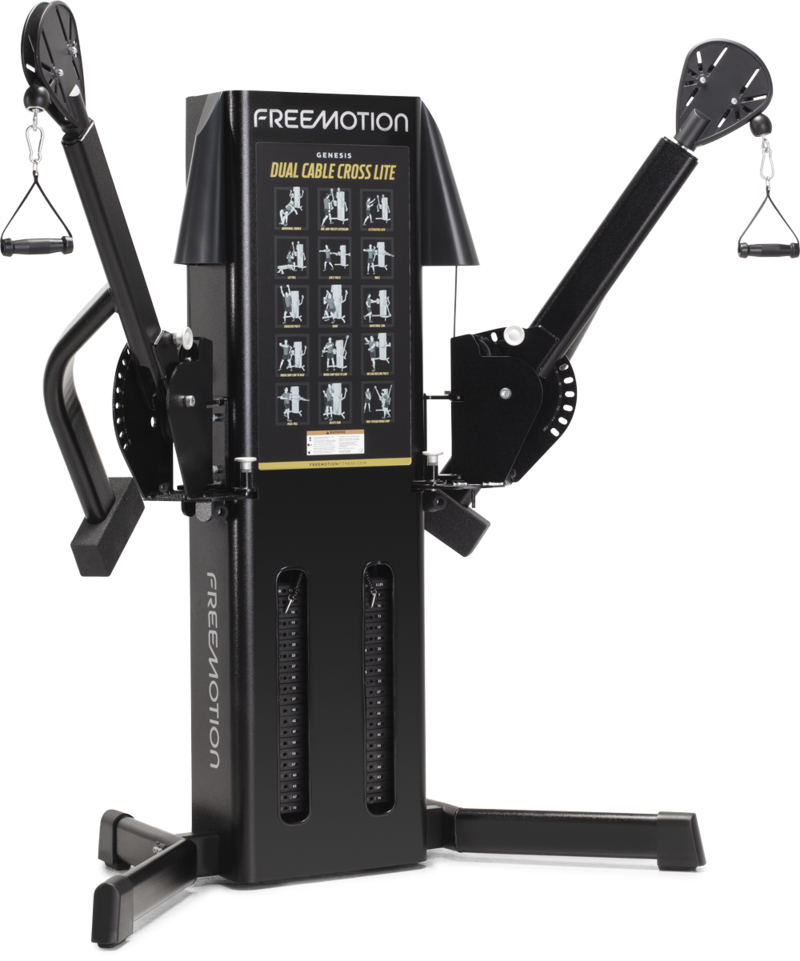

The next generations of functional trainers went back to being built on corner machines but also still had arms that moved in and out, which is a huge space saver. By having the shorter arms at the end of the corner you didn't need to be standing 11 ft away from the machine to utilize the arms close together. Cornering functional trainers with the complex movement may not be a complete generation unto themselves, but there aren't that many of them. There are a lot, a virtual ton, of corner functional trainers that DO NOT have lateral adjustment, but only a few that do. Expert tip there, know the difference before you buy!
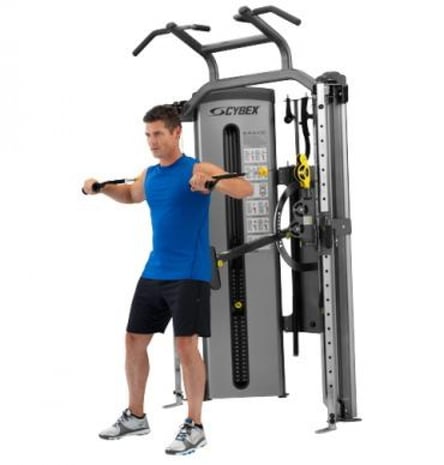

Cybex came up with another important development, the idea of progressive destabilization. This involves a support pad that comes out of the machine that allows the user to stabilize themselves from different positions, producing partially stabilized positions. There were studies done with a partially stabilized chest press, for example, that showed much better core muscle activation from a partially stabilized position than the older totally destabilized position without any support.
Since then Hoist, Altas and other companies have come up with variations on the support pad.
We also have the reincarnation of the Supergym, where cables are added to racks.
There are differences in weight stack ratios, and high mass - low travel weight stacks that any consumer needs to be aware of.
We also have the reincarnation of the Supergym, where cables are added to racks.
There are differences in weight stack ratios, and high mass - low travel weight stacks that any consumer needs to be aware of.
Now, this is a ton of information. If you want to know what is best for you, your gym space, and your workout, just let me know. I'm serious, we design gyms for a living, and it is our job to help you understand the best workout for you!
And we'd be happy to help you design your workout space!
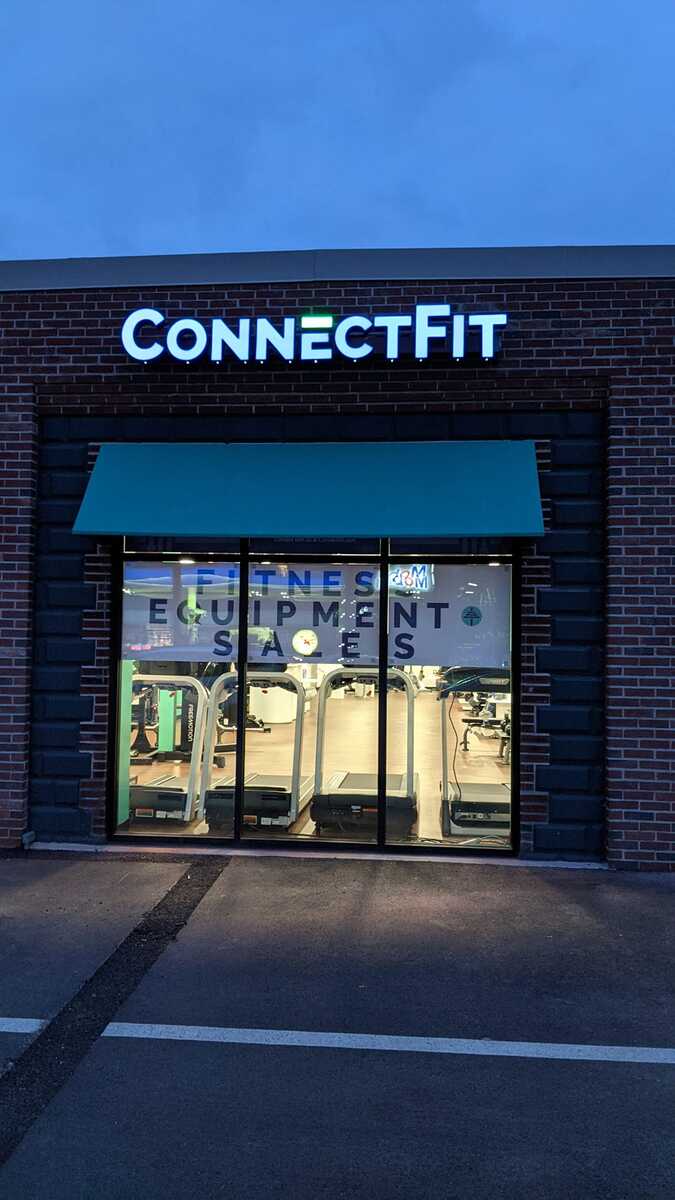
And we'd be happy to help you design your workout space!





COMMENTS